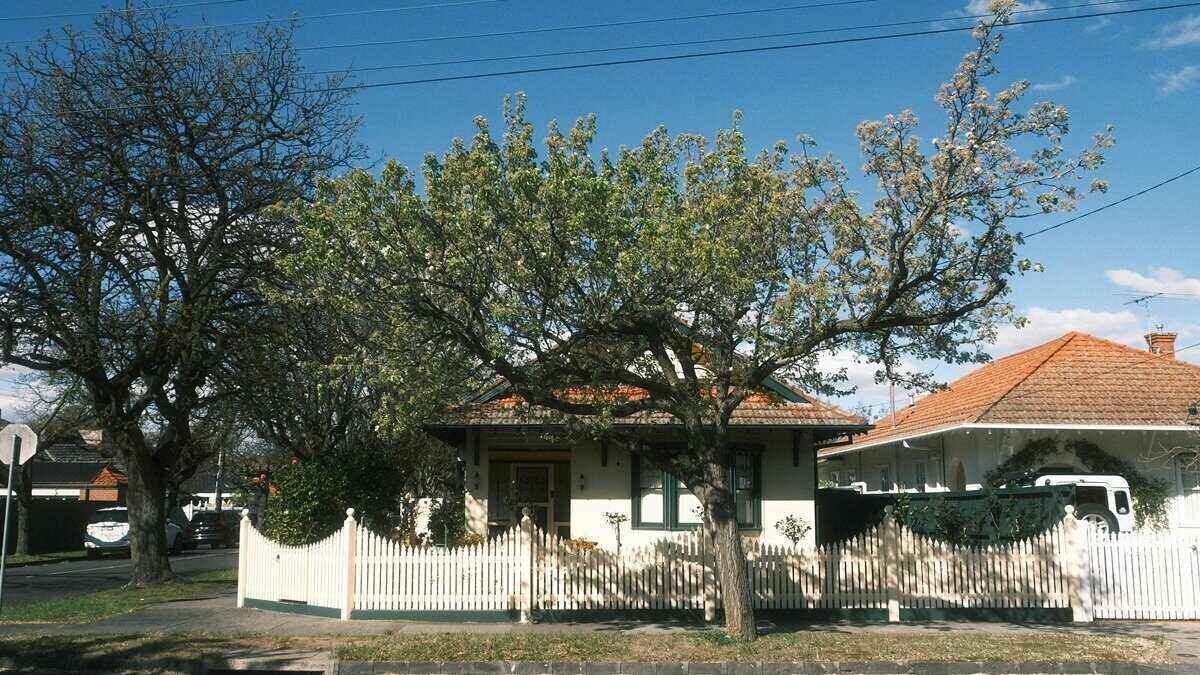Whether you're buying, selling, or investing in property, it's important that all parties have a clear idea of the property's value. There may be many opinions on that, but a formal property valuation often carries the most weight.
What is a property valuation?
A property valuation is a professional assessment of a property's value carried out by a certified valuer. It comes with a detailed report outlining the estimated price a property would likely fetch in the open market between a willing buyer and seller.
There are many types of 'valuation' out there. The most common include:
-
Market valuation
A market valuation considers the price an owner might get in a particular market in a particular time, considering both the property itself and recent comparable sales. They're generally presented in a detailed report. -
Bank valuation
Typically lower than a market valuation, a bank valuation is used by a lender to assess how much it's willing to lend in order for a borrower to buy a particular property. -
Property appraisal
Often conducted by a real estate agent, an appraisal is essentially an educated guess of how much a property might fetch on the market at a given time.
Lenders routinely require formal property valuations before they approve a home loan so they can be sure the property is worth what the borrower is prepared to pay for it.
These valuations, sometimes called bank valuations, tend to deliver more conservative estimates of a property's value as they also take into account the risks the property may pose to a lender. As such, they can sometimes arrive at quite a different price estimate to those bandied around by real estate agents.
Why do banks need to value a property?
When a property is being used as security for your home loan, a lender needs to be sure it will be able to recoup the outstanding loan amount should it need to sell your home in the event you default on your loan.
The bank valuation is a calculation on what the institution could reasonably expect to recover from the sale.
Bank valuations aren't always evident to the borrower, so homebuyers may not always be enlightened as to how much their bank is willing to lend.
How is a property's value calculated?
An official property or bank valuation will involve the valuer going to the site and conducting a thorough inspection of the property, both inside and out.
They will measure internal and external areas as well as the land size, shape, and any zoning restrictions. They will also assess the interior, considering the number of bedrooms, bathrooms, the age of the building, its fixtures, and so on.
Here are some of the key factors a valuer will take into account:
Land value
This considers the size of the block, local council zoning, any planning or environmental restrictions, accessibility, geographical topography, aspect, and general layout.
Location
As we well know, location is an all-important factor when it comes to property. A well-located home with access to transport, schools, and lifestyle amenities like cafes and restaurants is likely worth more than a similar property in an out-of-the-way area. Throw in proximity to a beach or water, or a view and the home will likely be worth more than a similar home in the area that doesn't have those qualities.
Potentially surprising external factors impacting value might include a property's proximity to power and transmission lines and whether it's in a high risk location (such as those that are flood or bushfire-prone).
Demand
A formal valuation will also take into account how likely the property is to be snapped up by other eager buyers. Demand can wax and wane depending on many factors, including under- or over-supply of housing in particular markets, amenities that attract more buyers to a location, and the area's local economy.
Property condition
While location and land value play significant roles in a property's value, the condition it's in will also have some bearing. A valuer will look at the property's age, the materials a home is built from, how well it's been maintained, and the standard of its fixtures and fittings. This applies to grounds, pools, and fences as well as the home itself.
Size and layout
Included in the valuer's estimate will be the number and types of rooms a property has, its overall layout, and architectural flair.
The valuer will also consider relevant market and other data and employ various valuation methods to arrive at a final valuation figure. This will be accompanied by a formal report providing detailed supporting information.
What happens if the bank valuation is lower than the property price?
If the bank or lender deems a property is worth less than the asking price, a borrower may need a bigger deposit to cover the shortfall between the valuation and the market price.
Banks and lenders tend to be conservative with their valuations and in a hot property market the end price could easily eclipse what the bank says. If this happens, your deposit may be in jeopardy as the bank may not lend you the amount you need.
If there's a gap between the advertised price or the agents' appraisal and the bank valuation, there are a few things you can do:
1. Challenge the valuation
Some banks and lenders let you challenge the valuation if you think it's too low. However, you might feel like you're talking to a brick wall. You'll need to provide evidence to your claim, such as recent sales of comparable properties in the area.
Some lenders eat the cost of the first valuation to get borrowers on board. However if you challenge the valuation, you may need to pay for the second round.
2. Borrow more money, raise your LVR
If the valuation comes in at less than the home value, another option is applying to borrow more money.
You may be able to borrow up to 95% of the property's value, which would see you putting down a 5% deposit and walking away with a 95% loan-to-value ratio (LVR). Keep in mind that if you have less than a 20% deposit you might need to pay lenders mortgage insurance (LMI).
3. Apply for a home loan with another lender
Applying with another lender could be a more successful avenue than coming to loggerheads with your original lender. Be aware that applying for multiple home loans and being knocked back from different lenders will likely adversely affect your credit report.
4. Tap into equity if you own another property
If you own another property, you might have accrued equity. If you're willing to put forth some equity in your existing home to fund another home purchase, your bank might be willing to lend more.
If you're a first home buyer, you could ask the same from a family member. That could see the 'Bank of Mum and Dad' acting as guarantor for your home loan.
How much do valuations cost?
Property valuations for homes in Australia generally cost between $300 and $600. Prices can be higher for larger homes, commercial properties, or those in rural and remote locations.
Most lenders will include the cost of property valuation as part of the home loan process, and some may even cover it. It will generally be included in broader home loan application fees.
If you're after a formal property valuation for other purposes, such as estate planning or investment analysis, you'll probably have to pick up the tab yourself.
When should you have your property valued?
You should consider having your property valued:
-
Before selling or buying: If you're planning to sell your property or purchase a new one, a valuation may help you determine a reasonable selling price or offer amount.
-
Refinancing: When refinancing an existing loan, a valuation may be required to establish the property's current value. This might affect the interest rate and terms of your new loan.
-
Estate planning and settlement: If you're involved in estate planning or estate settlement, a valuation can ensure fair distribution of assets.
-
Investment analysis: If you're considering property investments, valuations can provide information for evaluating potential returns.
Property valuation vs appraisal: is there a difference?
Although both valuations and appraisals aim to determine a property's market value, they are quite different processes. A house valuation is an official and comprehensive report carried out by a certified valuer that carries legal weight.
An appraisal, on the other hand, is not legally binding and is typically conducted by a real estate agent based on their knowledge of similar properties and recent sales in the market. They are generally free of charge and may not always represent an objective and independent assessment of a property's value, given agents can have their own motivations in arriving at a price.
An appraisal can give you a ballpark figure, but your lender will likely focus on the usually more conservative estimate that comes from an official valuation. What your property is actually worth on the market may be somewhere between the two.
Bank valuations and auctions: What to know before you bid
Auctions can be intimidating to the uninitiated, especially because price guides cannot be provided nor is the vendor's reserve price known. A selling agent can point you to recent sales of comparable properties in the area but you won't truly know until the hammer falls.
-
It's advisable you get pre-approval for a home loan so you're not bidding blindly. This lets you bid up to a certain amount and you'll know when to tap-out.
-
A typical marketing period of a home going to auction is four weeks. This gives you enough time to inspect the property and get a bank valuation.
It's highly possible for an auction price to blow out wildly beyond what you and your bank thought the property was worth. In this way, an auction can be considered the true gauge of the market.
Sales via auctions are unconditional, meaning you can't back out if you win, adding to the layer of intimidation. Doing the preparation before auction day is crucial.
Lender Home Loan Interest Rate Comparison Rate* Monthly Repayment Repayment type Rate Type Offset Redraw Ongoing Fees Upfront Fees Max LVR Lump Sum Repayment Extra Repayments Split Loan Option Tags Features Link Compare Promoted Product Disclosure
Promoted
Disclosure
Disclosure
Promoted
Disclosure
Image by Mavis M. on Unsplash
First published in October 2023
Collections: Buying a home Property Investment






Share